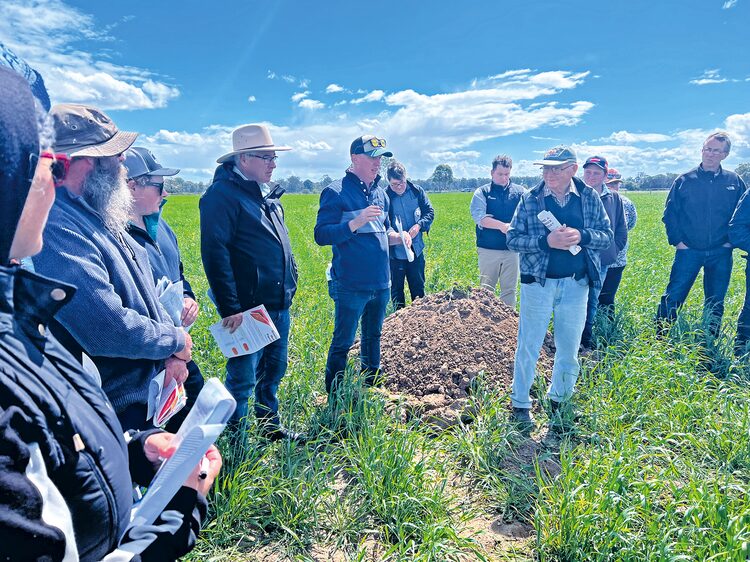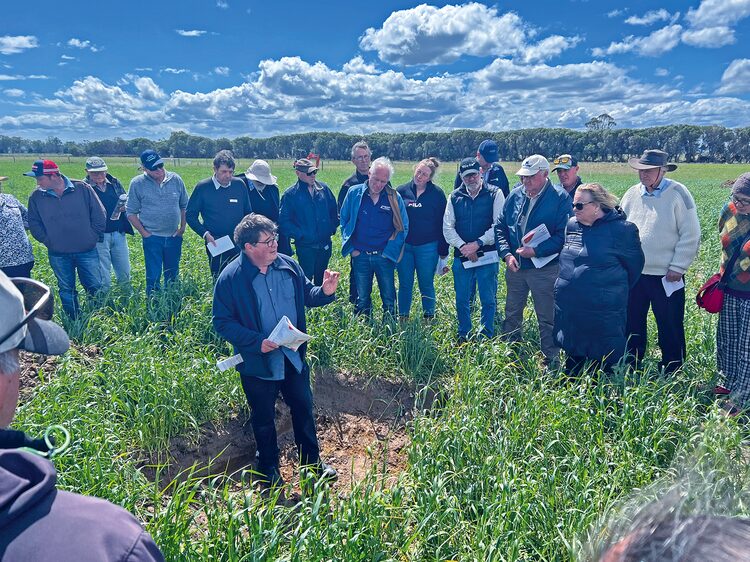More than 150 attendees made for record numbers at the Gippsland Agricultural Group’s fifth annual field day last week, where demonstrations and trials were put under the microscope.
GAgG chief executive officer, Trevor Caithness, said it was an outstanding crowd with a lot of enthusiasm shown for new technologies and on-farm practice change.
“There was a lot of interest, a lot of questions and a lot of discussion about opportunities to improve soils and soil structure to help productivity,” Mr Caithness said.
“There were plenty of new faces with people attending from Yanakie and Foster, the mountains and the Far East.
“It’s really encouraging to see people looking at practical ways to improve their farm situation and create a more robust family business.”
He said the aim of the group was to be totally open and transparent with learnings found on the Gippsland Research Farm, sharing the knowledge of what didn’t work.
“There were trials where some of the researchers weren’t happy with the outcomes but those are just as important – often we learn more from our mistakes than out successes.
“We don’t want to hide or sugarcoat any trials that miss the mark, it happens to everyone.”
Mr Caithness was one of the presenters in the ‘Can we grow more topsoil?’ sessions, representing a farmer group, along with Federation University’s Dr Bill Grant, and Full Circle Nutrition’s Pete Norwood.
The three have applied different inputs to the soil to aid the transformation of the top layer soil after the paddock was deep ripped to a depth of 300 millimetres, with the aim of mixing the first 100mm of topsoil with the next 200mm of clay.
Continued page 2
From page 1
The theory being tested is whether trying to make more and better topsoil is more cost effective than purchasing additional land.
Dr Grant’s method includes a primary focus on incorporating soil compost and cost $1740/ha; the farmer group includes traditional sources and cost $1552/ha, while Mr Norwood’s method aims to balance trace elements in addition to core macronutrients and cost $1352/ha.
The project has been aided by the Gippsland Drought Node, Food and Fibre Gippsland, with drought adoption officer, Rick Blackshaw, saying the current crop of barley would be harvested in summer and comparisons made of the yield from the three methods.
He said building a more robust topsoil, with increased water and nutrient holding capacity, made sense and helped farmers deal with climate variability.
Mr Caithness extended a big thank you to all the industry people and who got on board with Gippsland Ag and given their expertise, intellectual knowledge and their time.
Other subjects covered on the day included agro-forestry, the region-wide problem of African lovegrass being tackled at the GRF by Toms Creek Landcare and a small artificial insemination program run with heifers.
Hyper-yielding cereal crops, time of sowing and fungicides for wheat and barley varieties were also presented on, along with nitrogen fixation in farming systems and managing lucerne in wet conditions.














